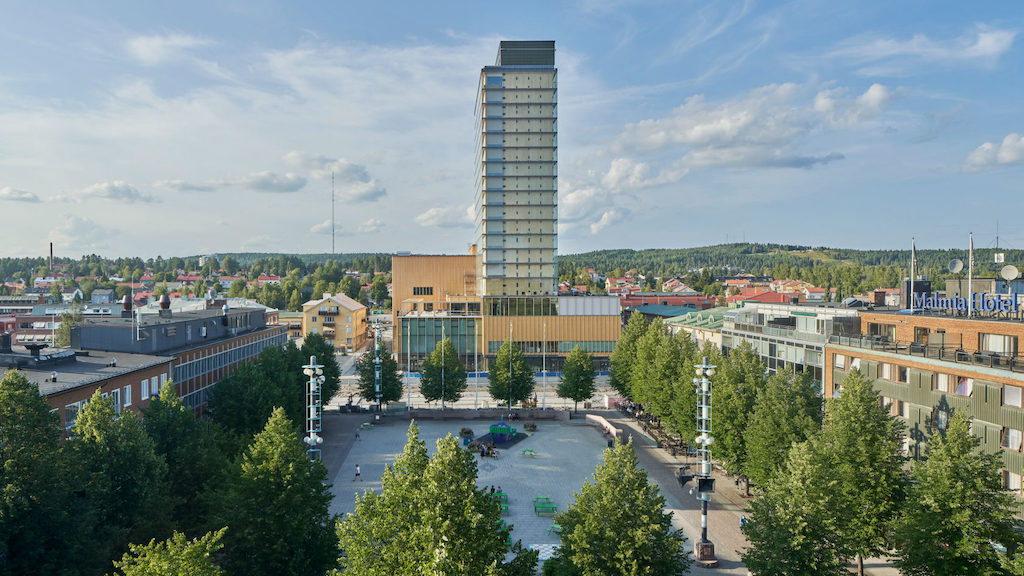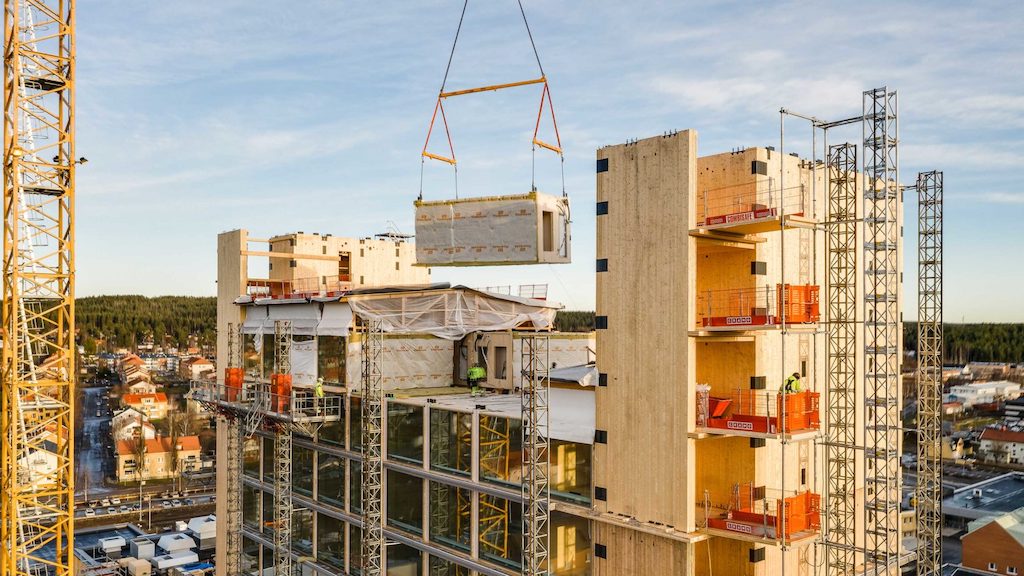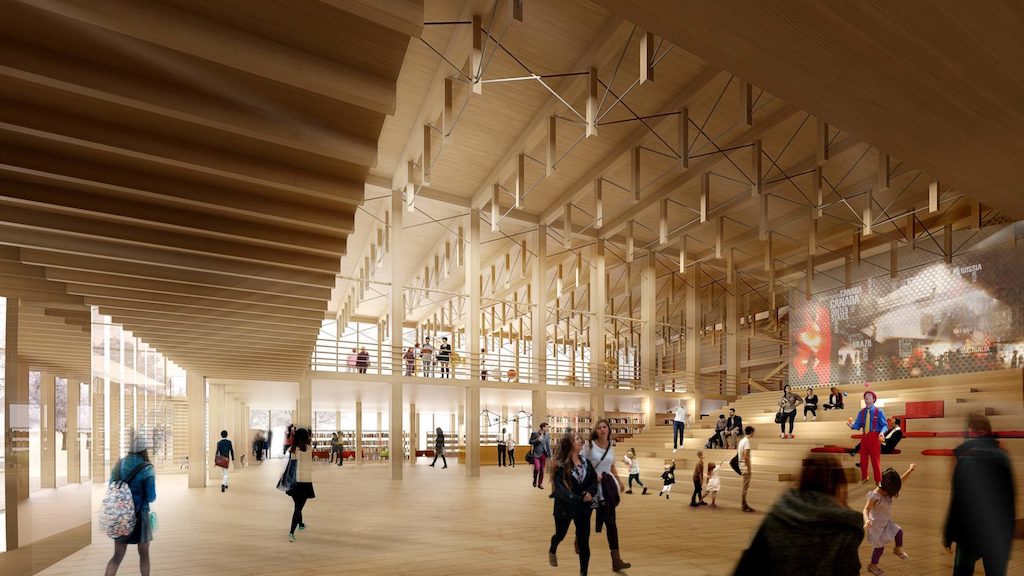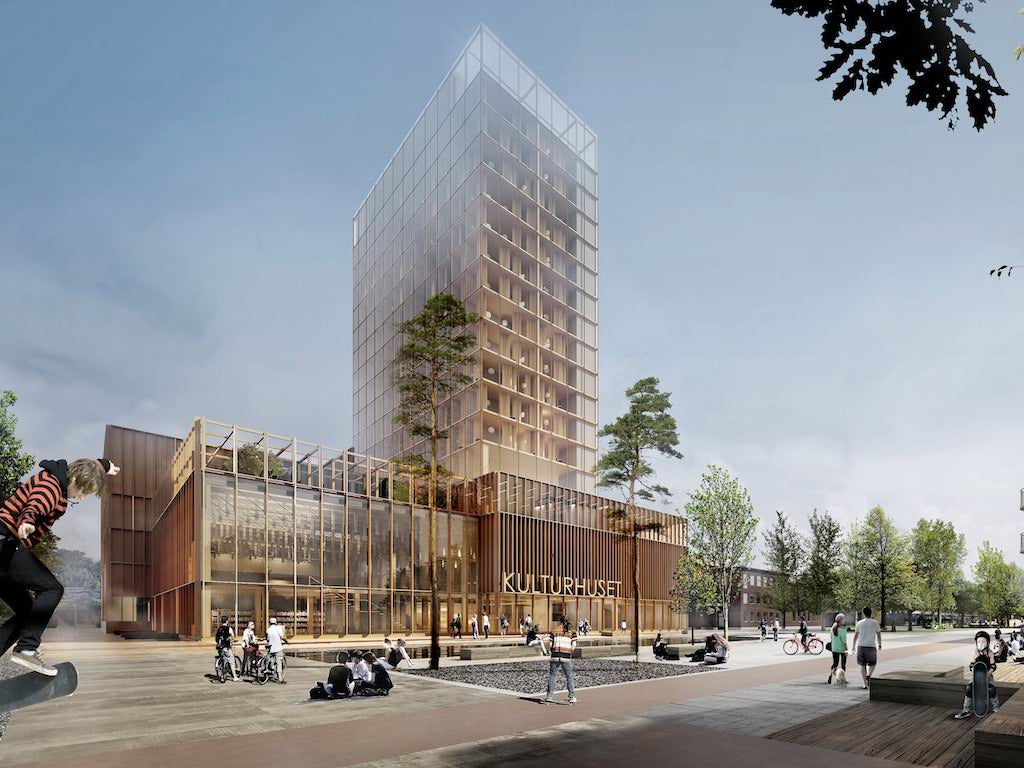3 Mins Read
Making our cities greener is now an issue that countries all over the world are thinking about. From creating low-emission zones to planting mini forests and designing naturally cooling buildings, almost every part of city life will have to be transformed to cope with the reality of climate change. And one Swedish city believes that wood buildings or skyscrapers—also known as “plyscrapers”—could become one of the strongest tools in the future of green construction.
Skellefteå, a historically industrial city in Sweden’s Västerbotten County, has taken huge leaps to green its environment. It now runs on 100% clean energy sourced from wind and hydropower, and even turns its 120,000 tonnes of e-waste into a recycled source of energy to power its heating system. Now, it is also home to one of the world’s tallest buildings made entirely from wood.

Read: Engineers have just created the ‘whitest paint yet’ to cool buildings and replace air-conditioning
Carbon-capturing wood buildings
In the heart of the city, Sara Kulturhus, also known as The Sara Cultural Centre, just opened up its doors a month ago. The 80-metre, 20-storey building is made out of over 10,000 cubic metres of timber and 2,600 cubic metres of glulam, a wood beam constructed from layers of lumber bonded together.
Altogether, this wood stores more than 9,000 tonnes of carbon dioxide—the equivalent of 13,000 round-trip flights from Stockholm to New York.
Even the elevator cores—the structure that supports the lifts that bring visitors up to The Wood Hotel that sits atop the cultural centre—are made from cross-laminated timber. Designed by architects at White Arkitekter, the “plyscraper” is meant to showcase what the future of timber-based construction could look like.

“Wood is the only renewable and carbon-neutral building material we know of and Sara Cultural Centre sequesters more than twice the carbon emissions caused by operational energy and embodied carbon from the production of materials, transportation, and construction at site,” the architects explained.
When they factor in the solar panels on the roof that power the building, White Arkitekter says that the Sara Cultural Centre will become fully carbon-negative within 50 years—and the building itself is designed to last for at least 100.
Read: This school in Hong Kong is building the city’s first Miyawaki forest
New ‘holy grail’ in eco-construction?
So, why are wood buildings going to be an important part of green cities? Simply put, the current way we construct our skyscrapers is unsustainable.
According to the World Green Building Council, buildings currently make up 39% of the energy-related carbon dioxide emissions globally. This figure increases to 60% in highly populated and dense cities, and of that amount, as much as 20% of the life cycle of buildings is driven by construction.

And using carbon-intensive materials such as concrete not only uses up huge amounts of the Earth’s resources and puts more emissions into the atmosphere, these buildings aren’t fit for a climate-stricken future.
For the city of Skellefteå, using wood is also paying homage to its long historical tradition in timber construction. Before being modernised, wooden houses were commonplace—and it now wants to bring this heritage back with the Sara Cultural Centre, which is now home to multiple shared spaces for the community, including the Skellefteå Art Gallery, Museum Anna Nordlander, Västerbotten Regional Theatre, and the new City Library.
“All the attention the building draws can be used to promote sustainable construction worldwide,” shared Robert Schmitz and Oscar Norelius of White Arkitekter. “We hope the project will help others in our collective transition to carbon neutrality.”
All images courtesy of The Sara Cultural Centre / White Arkitekter.




